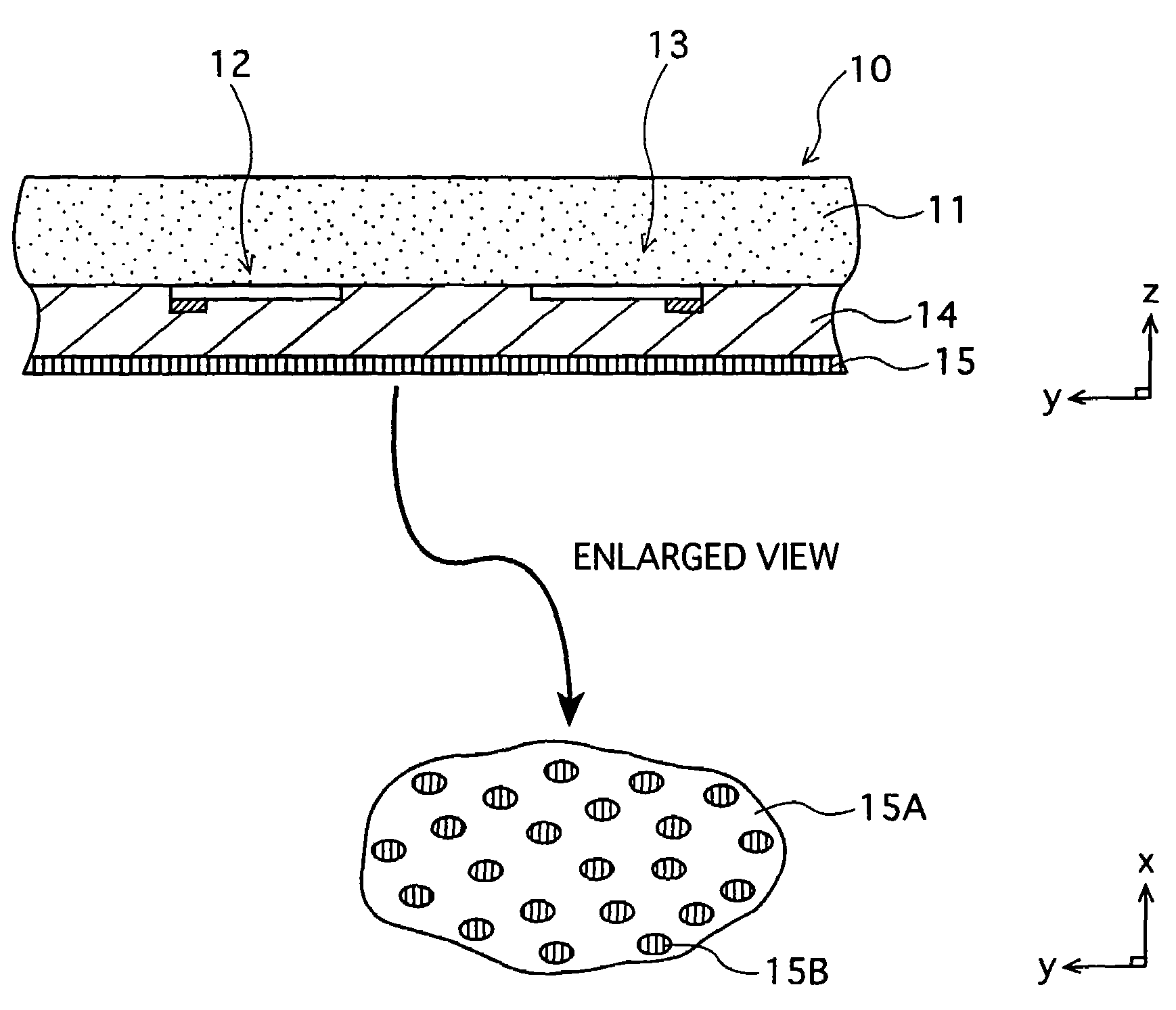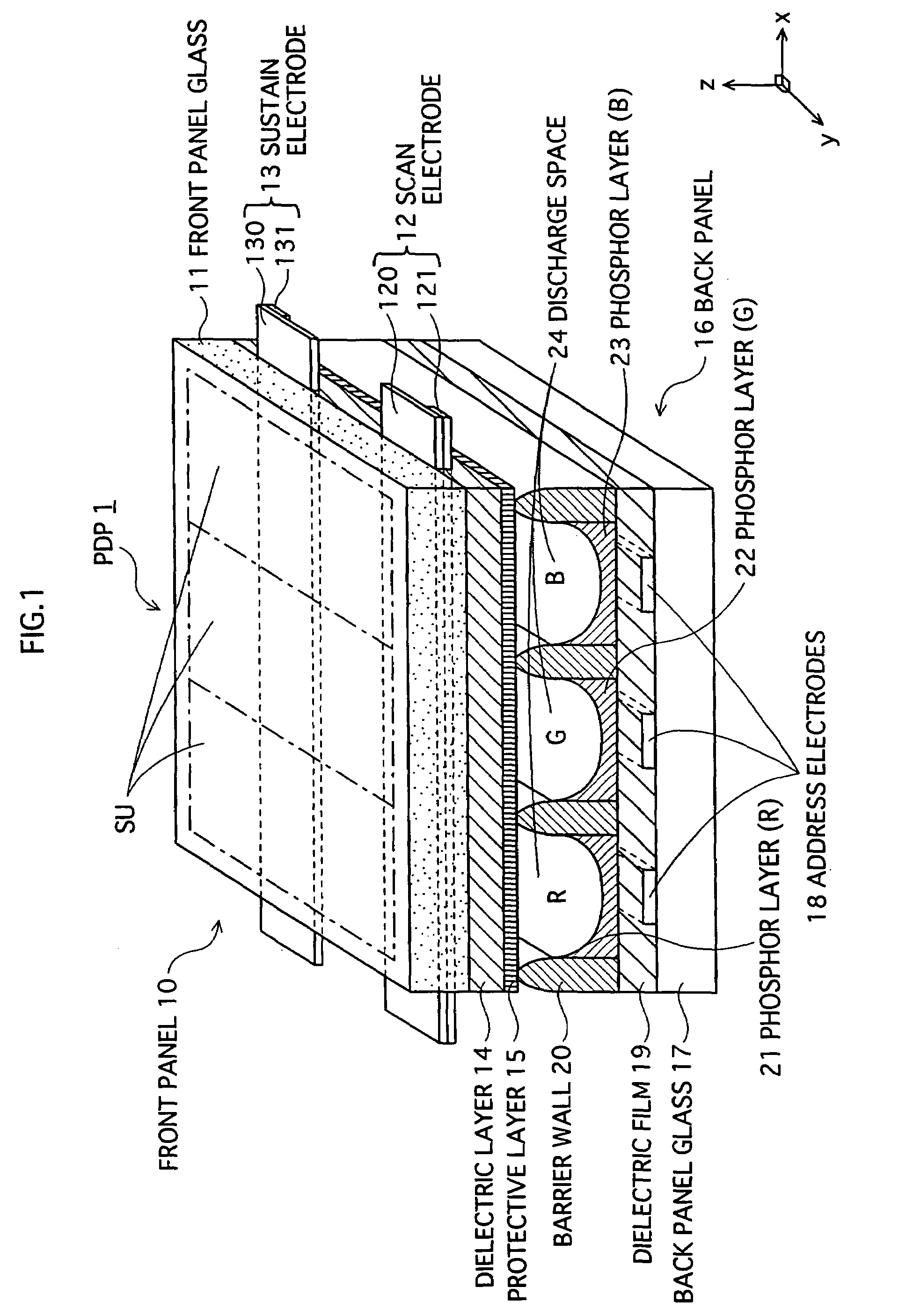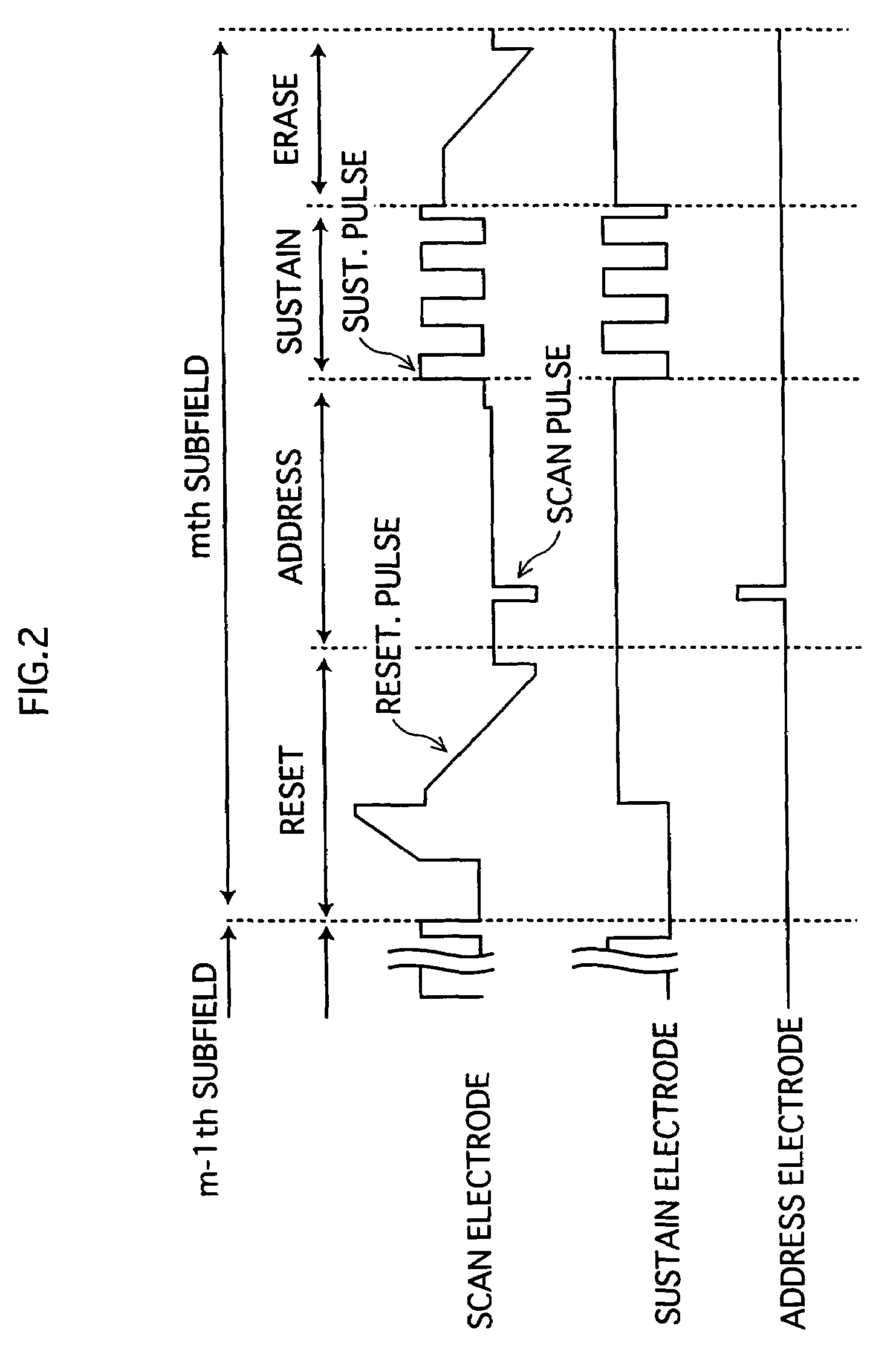Plasma display panel and method for manufacturing same
a technology of plasma display panel and manufacturing method, which is applied in the manufacture of electric discharge tubes/lamps, television systems, electrode systems, etc., can solve the problems of easy discharge-to-discharge variability between discharge cells, easy to increase the cost of pdps, and difficult to achieve satisfactory image display performance. , to achieve the effect of suppressing discharge variability, good secondary electron emission properties, and reducing firing voltage v
- Summary
- Abstract
- Description
- Claims
- Application Information
AI Technical Summary
Benefits of technology
Problems solved by technology
Method used
Image
Examples
embodiment 1
1-1. PDP Structure
[0029]FIG. 1 is a partial sectional view showing the main structure of an AC PDP 1 in embodiment 1 of the present invention. In FIG. 1, the z direction corresponds to a thickness direction of PDP 1, and the xy direction corresponds to a plane parallel with the panel surfaces of PDP 1. In the example given here PDP 1 is a 42-inch class PDP conforming to NTSC specifications, although the present invention may naturally be applied to other sizes and specifications such as XGA, SXGA and the like.
[0030]As shown in FIG. 1, PDP 1 is broadly divided into a front panel 10 and a back panel 16 disposed with main surfaces opposing each other.
[0031]Plural pairs of display electrodes 12 and 13 (scan electrodes 12, sustain electrodes 13) are disposed on a main surface of a front glass panel 11 forming a substrate of front panel 10. Display electrodes 12 and 13 are formed by respectively layering buslines 121 and 131 (thickness: 7 μm; width: 95 μm) made from a silver (Ag) thick fi...
embodiment 2
3. Embodiment 2
[0088]The structure of a PDP of embodiment 2 is described next using FIG. 4.
[0089]Instead of fine MgO crystalline particles 15B, protective layer 15 of embodiment 2 has carbon nanotubes (CNT) 15C formed from carbon crystal dispersed throughout MgO crystal 15A so as to be exposed to discharge spaces 24. MgO crystal 15A and CNT 15C are respectively assigned the tasks of reducing the firing voltage Vf and controlling discharge variability required of protective layer 15. Protective layer 15 can, for example, be formed by adding CNT to an organic material that includes an MgO precursor, applying the organic material with additive CNT to the front panel, and baking the applied material.
[0090]With a PDP having the above structure, MgO crystal 15A exhibits the same effects as embodiment 1 when the PDP is driven. The excellent emission properties of CNT 15C allow for the secondary electron emission coefficient (Υ) of protective layer 15 as well as MgO crystal 15A to be improv...
embodiment 3
5. Embodiment 3
5-1. Structure of Protective Layer
[0094]PDP 1 of an embodiment 3 is described next using the partial cross-sectional views of the PDP shown in FIGS. 6A and 6B.
[0095]FIG. 6A is a cross-sectional view in the x direction, while FIG. 6B is a cross-sectional view in the y direction that cuts FIG. 6A at a-a′. The basic structure of PDP 1 is similar to embodiments 1 and 2, with a difference lying only in the structure of protective layer 15, which is a feature of the present invention.
[0096]In PDP 1 of embodiment 3, as shown in FIGS. 6A and 6B, at least a surface of protective layer 15 is structured from a base made from MgO as a first material and isolated metal parts 150 made from a metal material having a higher Fermi energy than the MgO of the base as a second material, the isolated metal parts being deposited on the base so as to face into discharge spaces 24. Specifically, isolated metal parts 150 are positioned so as to overlap in the thickness direction of the panel ...
PUM
| Property | Measurement | Unit |
|---|---|---|
| size | aaaaa | aaaaa |
| thickness | aaaaa | aaaaa |
| thickness | aaaaa | aaaaa |
Abstract
Description
Claims
Application Information
 Login to View More
Login to View More - R&D
- Intellectual Property
- Life Sciences
- Materials
- Tech Scout
- Unparalleled Data Quality
- Higher Quality Content
- 60% Fewer Hallucinations
Browse by: Latest US Patents, China's latest patents, Technical Efficacy Thesaurus, Application Domain, Technology Topic, Popular Technical Reports.
© 2025 PatSnap. All rights reserved.Legal|Privacy policy|Modern Slavery Act Transparency Statement|Sitemap|About US| Contact US: help@patsnap.com



